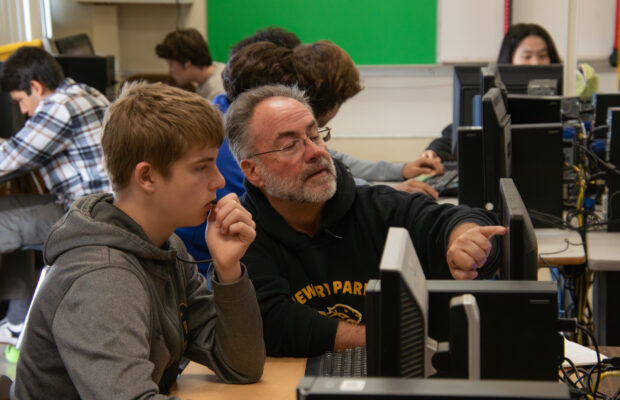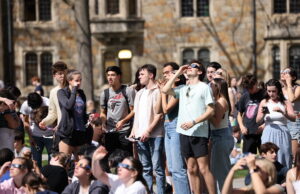NPHS photo classes approach subject differently

From developing film under the red lights in the darkroom or adjusting exposure in photoshop, some Newbury Park High School students have opted to study photography through classes instructed by Eric Lindroth and Richard Bateman.
In his digital photography class, Bateman exposes students to 60 distinct kinds of photography. “You’re not expected to master [all of them]. You’re just expected to get to know what [each type] is […] I feel with digital photography, there’s something for everybody,” Bateman said.
Bateman’s teaching philosophy drove him to adjust his curriculum during the pandemic to make photography functionable remotely. “When COVID hit, a lot of the work had to be done by students at their own home, which opened my eyes to [the fact that] photography just doesn’t only take place on the campus of Newbury Park High School- it happens everywhere in the world. So, in 60 different assignments, I make it so that students have to go out and look at photography on other landscapes, on other places, in other events and other things ‘cause taking pictures out in our quad can only go so far,” Bateman said.
Additionally, Bateman aimed to make his course more accessible to students. “I made sure that the resources were available to the students because nobody could get to school to check out cameras or things like that. So, I adapted my whole curriculum to the [phone], something that a lot of students have,” Bateman said.
While cell phone photography is very accessible, Eric Lindroth continues to teach his students with SLR and DSLR cameras. “It’s a professional way of shooting, you don’t show up with an iPhone to shoot professional photography,” Lindroth said.
Photography One and Two are hybrid programs, with half of the class being digital and the other half being film and darkroom. For Lindroth, the darkroom is of particular significance as a sanctuary; “In [the darkroom] you’re working physically with the pieces versus working with the binary code. You’re actually physically working with the analog world, and so I think […] working in the darkroom is kind of like a digital detox,” Lindroth said.
Lindroth also emphasizes the importance of learning the roots of photography by gaining experience in film photography and photo development. “Working in the darkroom has great value because there are certain things you use in Photoshop like dodging and burning and masks. [Those all] have their foundations in the darkroom, [so when] students work, [it’s like] they’re actually in a darkroom inside a camera,” Lindroth said.
Lindroth expressed that a common misconception among people is that film is dead and while darkrooms have become harder to come by, the current generation is particularly interested in the unique experience of working with film in the darkroom. “I really enjoy teaching it. I love it. I feel like I’m part of a cause to keep film photography alive. That is, not just me, but my students and everyone who […] pay [for supplies],” Lindroth said.
Both classes are taught by teachers who believe what they are doing is representative of a larger cause. Bateman sees capturing a moment as a selfless act, “Photographers don’t do it for themselves, they do it to record history or things for other students, or other people. We have to go through the process of choosing what’s good and bad. But we’re really doing it for others because we have the memory of being there,” Bateman said.



